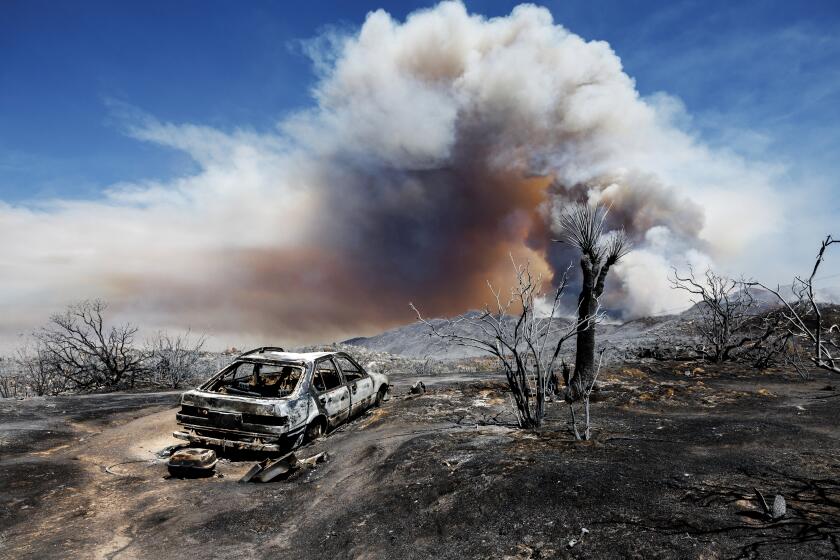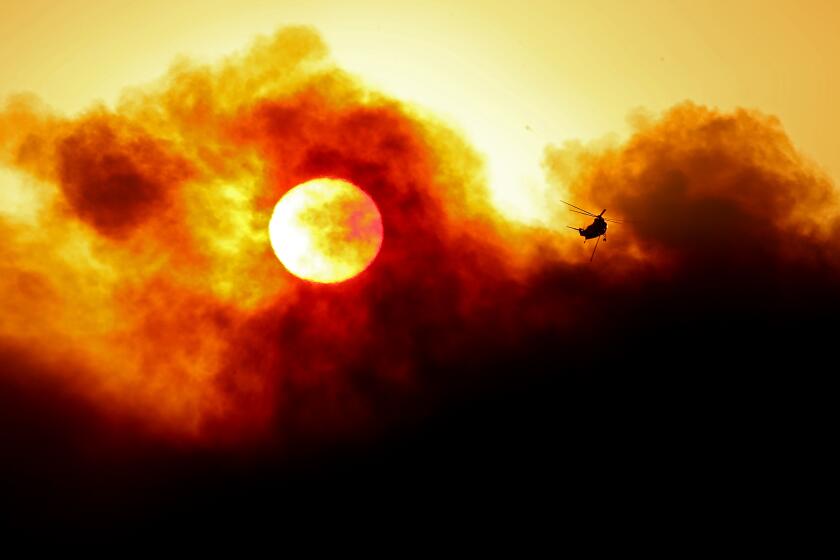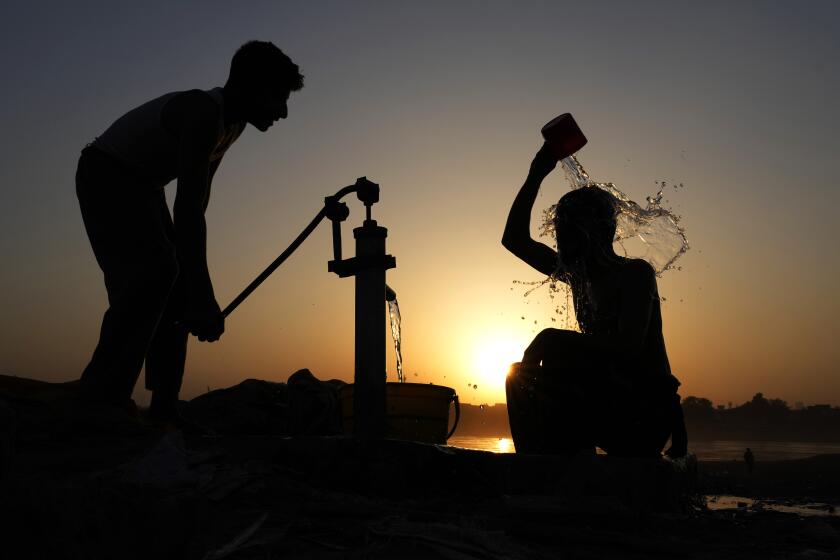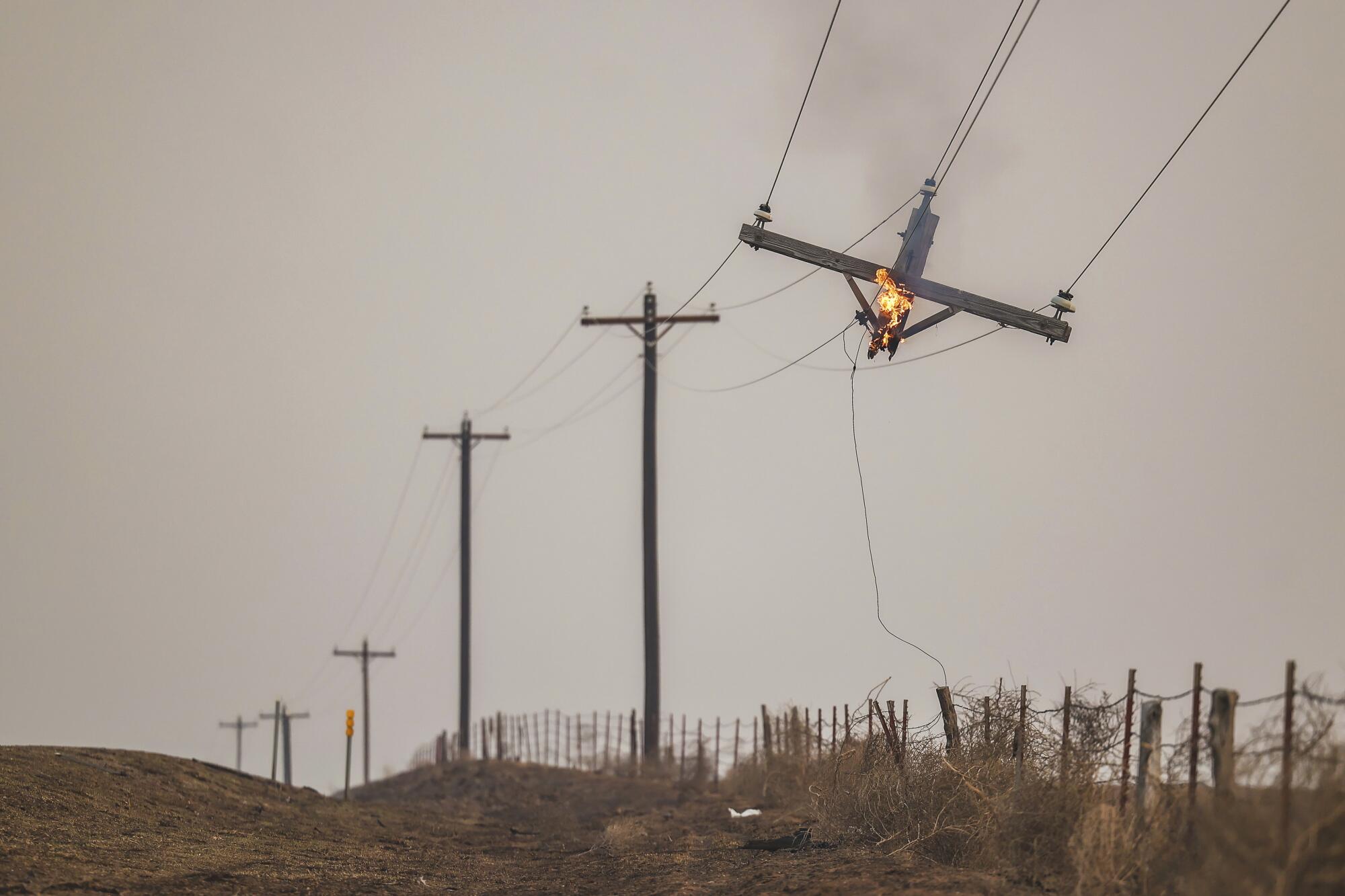
- Share via
The United States is halfway through the period commonly known as summer, or what some scientists are now calling the “danger season” — the stretch of time from May to October when extreme weather events are peaking and likely to overlap due to the exacerbating influence of climate change.
So far this season, 99% of the country’s population has been touched by at least one extreme weather alert, according to an assessment from the nonprofit Union of Concerned Scientists, which tracks heat, wildfire, storm and flood alerts from the National Weather Service on a map that is updated daily.
They found that only 79 counties across the U.S. — home to just 1% of the country’s population — have been left untouched so far this season. These counties are located primarily in Alaska, Michigan, Minnesota and Wisconsin.
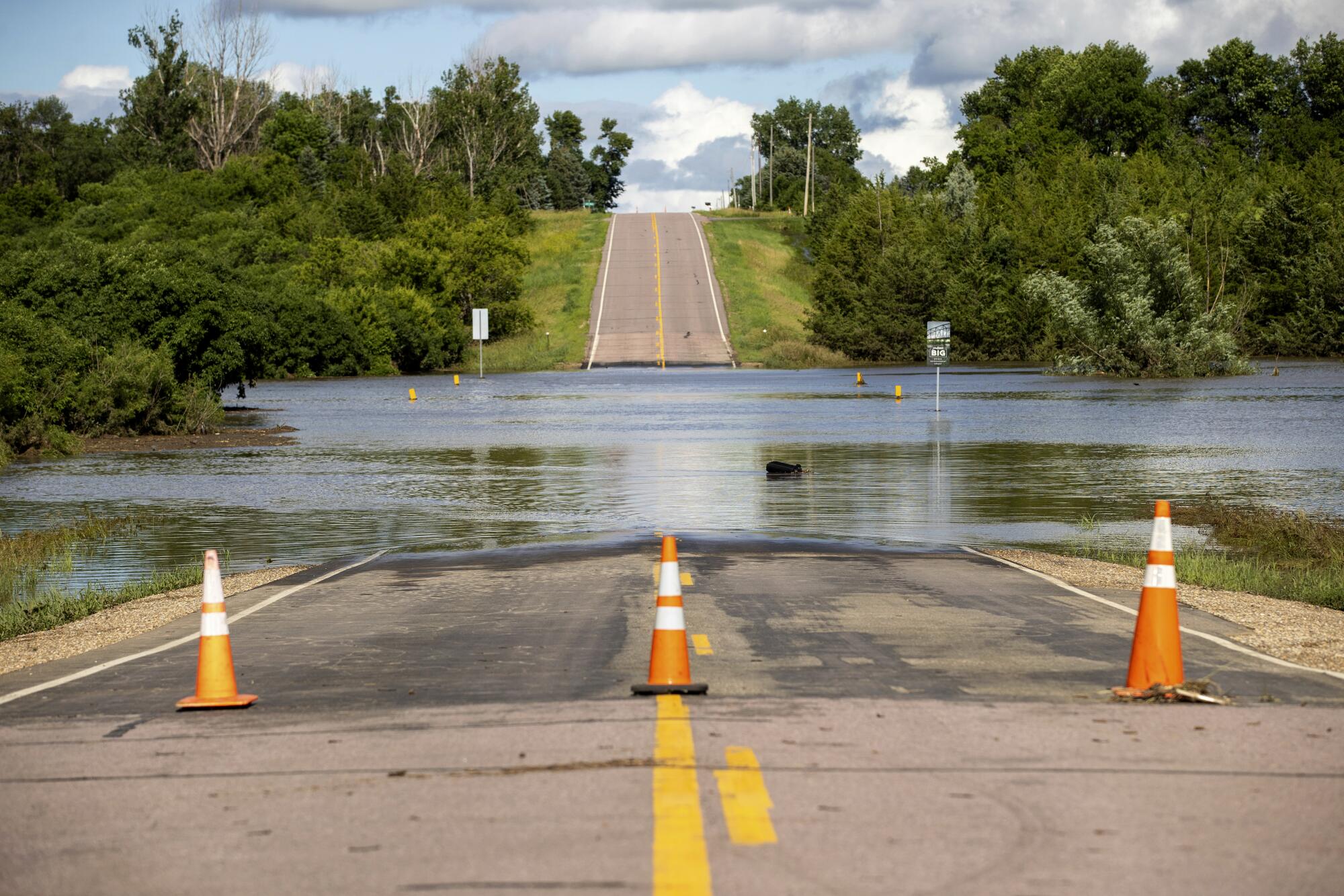
The findings suggest that a new reality is emerging for millions of Americans: a time of year once defined by lazy afternoons, swimming pools and backyard barbecues is increasingly marked by calamity.
“We are at the halfway point — we still have roughly another three months until the end of October,” said Juan Declet-Barreto, an environmental and social scientist who analyzed the latest map data. “The concern is that there’s much more in store.”
Aggressive and impactful reporting on climate change, the environment, health and science.
The data reveal other concerning findings, including that nearly one-third of the country’s population had already been under at least one extreme weather alert within the first week of the season. By mid-May, that number had climbed to almost half the population, 170 million people.
Recent months have been marked by sizzling heat, smothering wildfire smoke and dangerous floods.
In California, overgrown vegetation that turned to kindling amid record-breaking heat fueled the Park fire after it sparked in July. The wildfire is now the state’s fourth-largest on record at 429,263 acres.
The blaze — one of nearly two dozen active wildfires in the state — is still only 40% contained.
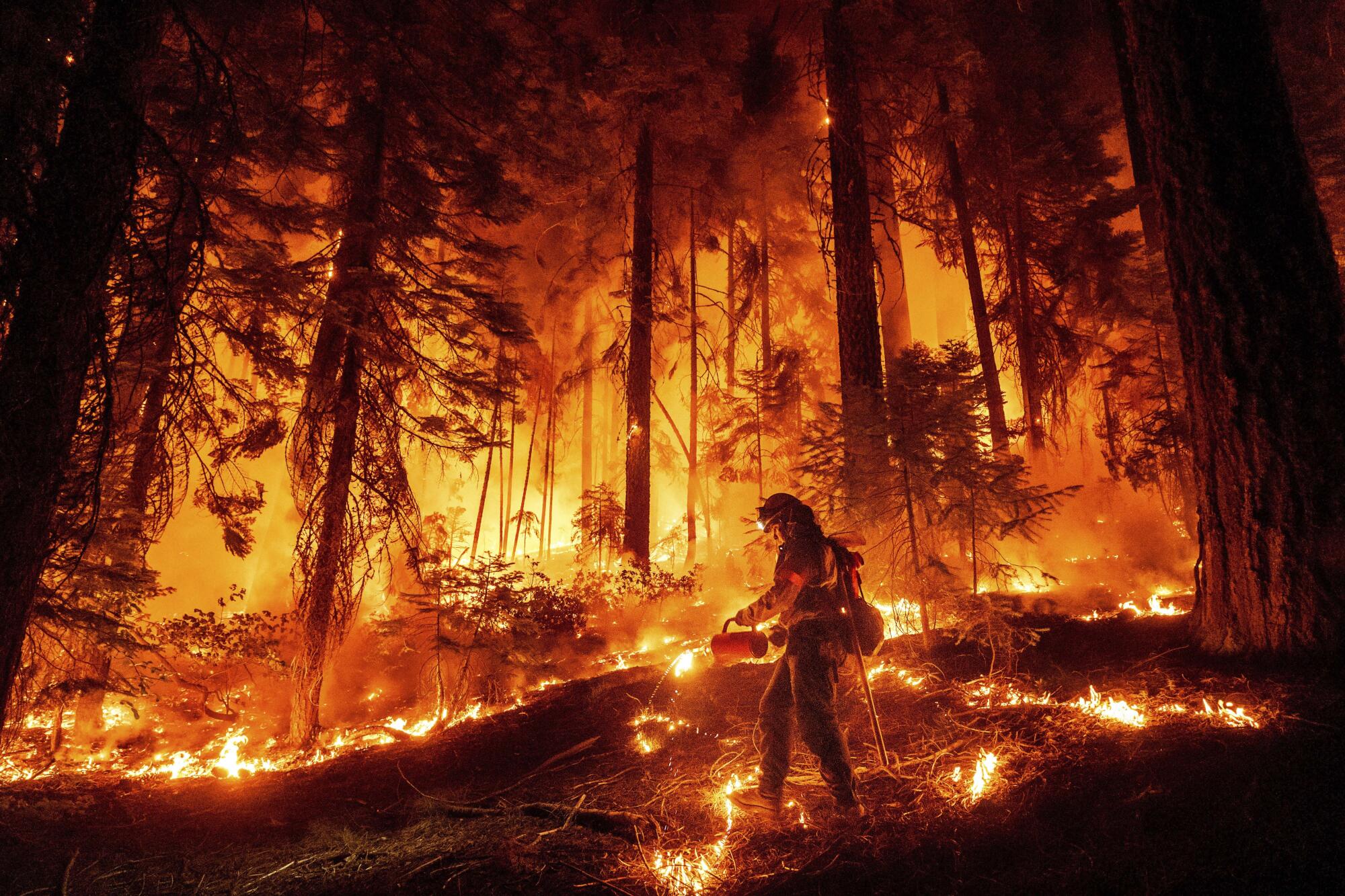
Last month was also the hottest month on record in the Golden State — and the second-hottest month on record globally. Two days, July 22 and 23, were Earth’s single hottest days in the modern climate record, according to the European Union’s Copernicus Climate Change Service.
But the hazards have extended far beyond California.
On Thursday, there were more than 60 million people under an extreme weather alert in the U.S., the map shows. That includes much of Puerto Rico, which was under flood watches and warnings due to Hurricane Ernesto.
Since the start of the season, extreme heat alerts have dominated much of the West Coast as well as East Texas and parts of the Southeast. Fire weather alerts were most prevalent in the Pacific Northwest and the Four Corners region.
Meanwhile, flood alerts covered huge swaths of the country, including parts of Texas inundated by Hurricane Beryl in July, and the East Coast, where Tropical Storm Debby carved a path of destruction earlier this month.
Many of these alerts have occurred simultaneously, indicating compounding dangers for millions of people, said Declet-Barreto, the union’s senior social scientist for climate vulnerability.
“What you used to associate with summer ... has become a dangerous proposition for many people across the country,” he said. “There are fewer and fewer places where you can basically hide from these impacts.”
California’s average temperature for July was the hottest on record since 1895, according to new data from NOAA.
Alex Hall, a professor at UCLA’s Institute of the Environment and Sustainability, said the framing of May through October as “danger season” makes sense because so many risks — from hurricanes to wildfires to heat — are concentrated in the summer.
However, that doesn’t mean there are no impacts the rest of the year — especially in a state such as California that has been battered by atmospheric rivers and floods in recent winters.
Still, he wasn’t surprised that the map indicates 99% of the country has experienced an extreme weather alert since May.
“The kind of global and continental indicators really are blinking red that this is a year of climate change impacts,” Hall said. “When you combine the fact we expect a significant fraction of the population to be affected by extreme weather in a place as big as the U.S., and we’re in a year where climate change is really rearing its ugly head, I would say this is expected, unfortunately.”
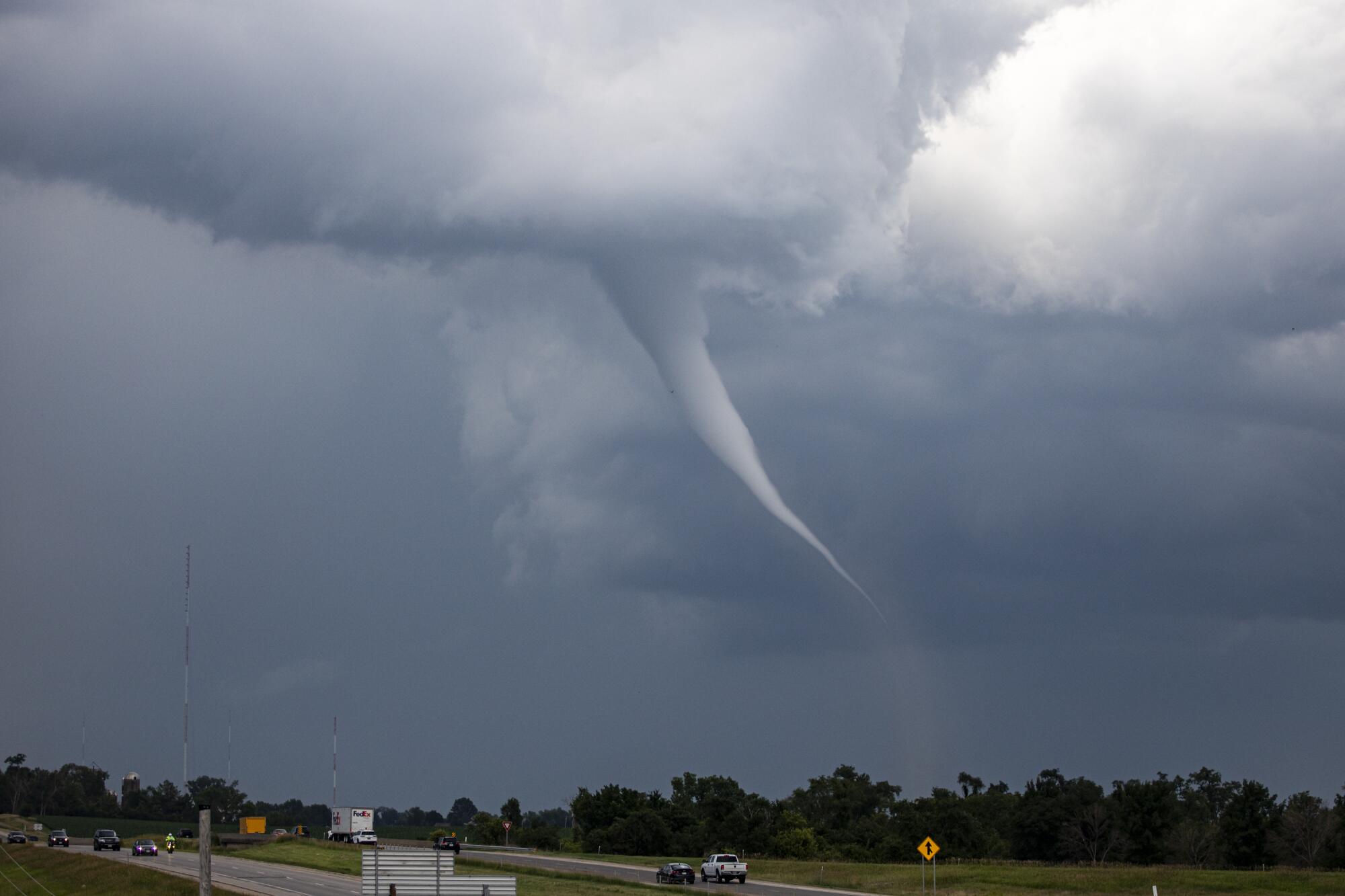
The map also dovetails with observations from the National Oceanic and Atmospheric Administration, which has reported 19 confirmed weather and climate disasters with individual losses exceeding $1 billion as of Aug. 8 this year. They have together resulted in the deaths of at least 149 people.
Hall said such damages are likely to increase in the years ahead, not only because of climate change, but also because of population growth and building practices that can put more people in harm’s way.
“We have built our infrastructure for a different world, and in some ways we weren’t even that well adapted to the world that we had,” he said. “And now we have a new climate.”
Making the Federal Emergency Management Agency formally recognize extreme heat and smoke would unlock crucial disaster relief funding during those events.
The latest seasonal outlook from NOAA also indicates that more hazards are probably in store in the coming months. Much of the country is projected to see above-average temperatures through October, while all of the East Coast is likely to see above-average precipitation.
“Stay vigilant and assume that these impacts are going to continue in force throughout the end of danger season,” said Declet-Barreto, noting that it is still peak hurricane season in the Atlantic and peak wildfire season in the West.
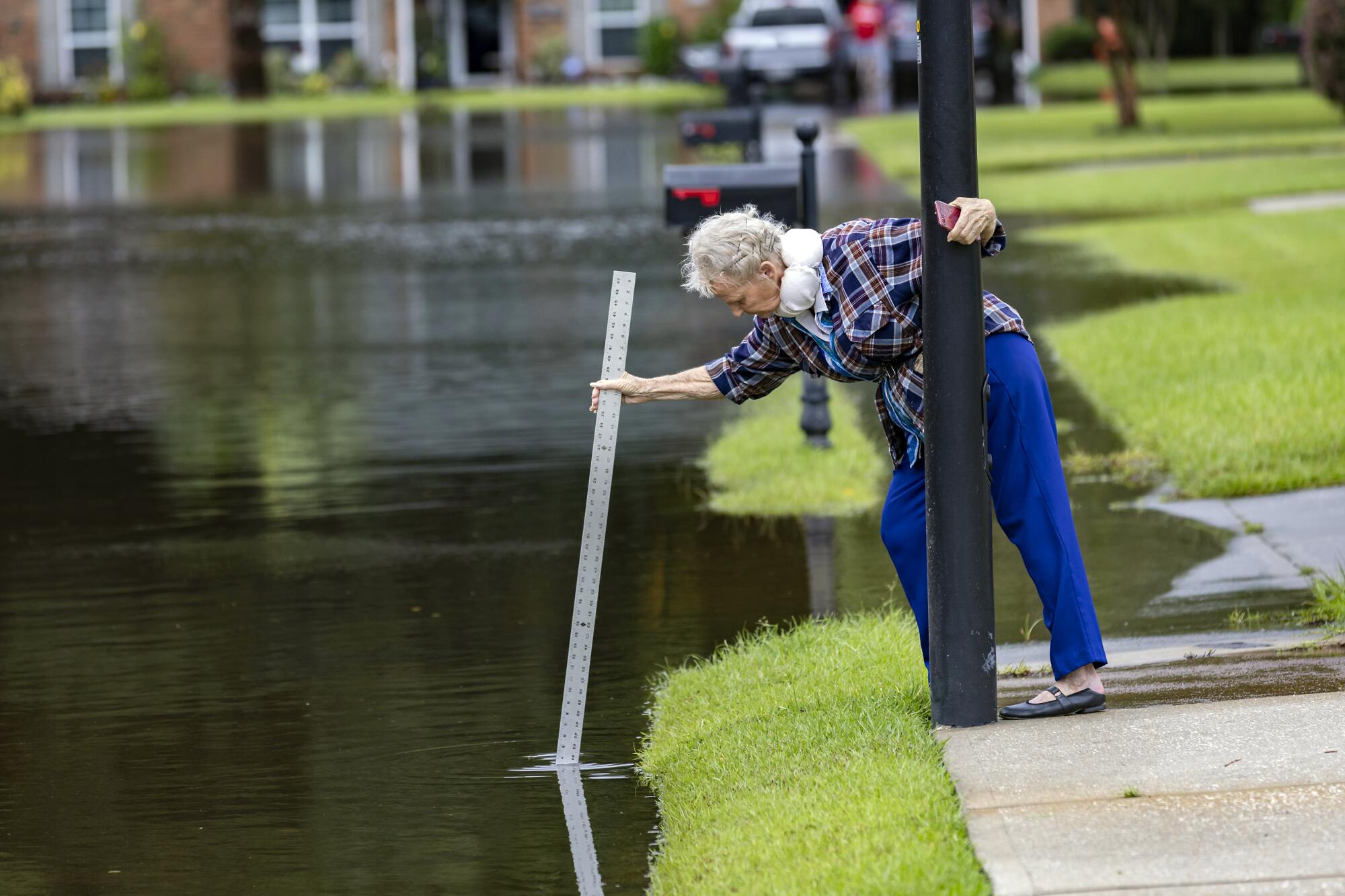
But those impacts also may not be felt equally, he said. Many of the counties that have already had at least three weeks’ worth of extreme heat alerts are home to communities deemed disadvantaged by the White House’s climate justice and economic screening tool.
That includes densely populated areas that suffer from the urban heat island effect, as well as rural and agricultural areas that are home to lower-income populations and large amounts of farmworkers who work outdoors.
Still, the broader data is a stark reminder not only that people should be preparing for disasters at the individual and household level, but also that more government policies and interventions will be needed to ensure people can defend themselves.
For instance, environmental groups are currently pushing for the Federal Emergency Management Agency, or FEMA, to expand its definition of a “major disaster” to include extreme heat and wildfire smoke.
At the same time, the U.S. Department of Labor’s Occupational Safety and Health Administration, or OSHA, is weighing whether to implement heat standards to protect indoor and outdoor workers from rising temperatures — a move that would follow similar steps taken in California.
Global average temperatures and CO₂ levels continue to soar. May was Earth’s 12th consecutive hottest month on record, officials announced this week.
And while this summer’s conditions may seem extreme, the season is currently on par with conditions in 2023, which was also marked by heat waves, floods and other events in the U.S., Declet-Barreto said.
The effect is also expected to persist next summer, and certainly in summers to come.
“These trends are likely to get worse, because the emissions trajectories have not gone down — they have not shifted to where they need to be to where we can start fending off the worst of climate change,” he said, referring to rising atmospheric carbon dioxide levels and fossil fuel emissions, which are a main driver of climate change.
Even if humanity turned off the spigot of greenhouse gas emissions today, the emissions that are already in the atmosphere would continue to contribute to warmer temperatures and climate instability, he said.
However, that doesn’t mean that people should stop taking action to prevent a worst-case scenario.
“It goes back to the choices that we have as a society,” Declet-Barreto said. “This problem was created by choices that were made by people a long time ago and currently. And we have a solution that is also based on the choices that we make about emissions now.”
Toward a more sustainable California
Get Boiling Point, our newsletter exploring climate change, energy and the environment, and become part of the conversation — and the solution.
You may occasionally receive promotional content from the Los Angeles Times.

